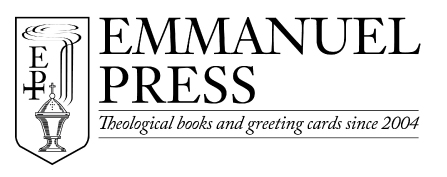Just Arrived: An Explanation of the Common Service
The Common Service, with roots in the Reformation, the Middle Ages, and the early church, became the standard English liturgy for the Lutheran Church in America in the late 19th century. The Lutheran Church—Missouri Synod published it as its standard in The Lutheran Hymnal in 1941. With the publication of Lutheran Worship (1982), editors revised the Common Service, updating what they considered archaic language, but the basic structure remained the same. In the Lutheran Service Book (2006), editors have again included the Divine Service from The Lutheran Hymnal, which is the liturgy of the Common Service.
What is it about the beauty and reverence of this Divine Service that have caused Lutheran congregations to welcome it every Sunday morning for over a century? Many today enjoy it without being able to verbalize its deep theological beauty. Others may exclude it from congregational practice because they consider it outdated and invalid for the modern parishioner. In either case, the editors of An Explanation of the Common Service provide a basic yet important description of the theological and biblical meaning of this time-tested liturgy.
An Explanation of the Common Service explains the liturgy in such simple terms that it is perfect for teaching new members, catechumens, and youth. Yet its timeless truths are profound enough to instruct even long-time members and pastors. First printed a century ago, this Lutheran liturgical handbook uses questions and answers to explain the meaning of three services: the Communion service, Matins, and Vespers. (Liturgical texts are equivalent to those in The Lutheran Hymnal, 1941.) In addition, hymnody, liturgical theology, and history are addressed succinctly. The glossary of liturgical terms is helpful, extensive, and reliable.
Now Available: Baier, Compendium Theologiae Positivae IV: Indices
Besides full indices of topics, names, authors, and Scripture citations, this index volume to the Baier-Walther Compendium includes a valuable list of aphorisms in Latin and German for every locus of theology and an index of “several of Baier’s phrases, opinions, and modes of teaching, of which Dr. Walther did not approve.” In Latin and German (modern typesetting).
Baier-Walther, Vol. I-II Hot Off the Press
Lutherans who follow what is known as the “historic one-year series” heard this past Sunday of our Lord’s transfiguration, occuring at the end of Epiphanytide, preparing us for the beginning of Pre-Lent. Other Lutherans who follow newer lectionaries will celebrate Transfiguration in a few weeks. Just as the voice of God the Father at His baptism directed us to Jesus as the Son of God, so now at the Transfiguration, God the Father once more indicates that this Jesus is the beloved Son of God, whom we are to hear, and in so doing indicates to us the mystery of the Holy Trinity.
Emmanuel Press is happy to announce yet another book that directs us to the Triune God revealed to us in Christ’s Transfiguration. Volumes 1 and 2 (bound into one) of Baier’s Compendium Theologiae Positivae (Compendium of Positive Theology) are hot off the presses, completing the text of this systematic theology. In the future, we plan to print the helpful index volume for this work.
Out of print for over a century, the Baier-Walther is a confessional Lutheran dogmatics work in Latin and German that was the basis for Francis Pieper’s well-known Christian Dogmatics. But unlike Pieper, Baier-Walther is marked by concise definitions and sizeable quotations of orthodox Lutheran theologians from Luther through the end of the 17th century. In addition, Baier-Walther gives a sampling of 19th-century theologians (e.g. Hofmann) as a contrast to the classical, Lutheran orthodox position on many doctrines.
Volume I-II of this, the Lutheran Church–Missouri Synod’s first dogmatics text, includes: The nature and constitution of theology; Natural theology; Revealed theology; The principle of revealed theology, Sacred Scripture; God; His existence, essence, and divine attributes; The mystery of the most holy Trinity; Creation; Angels; The image of God granted to man in the first creation; God’s providence; Eternal beatitude; Eternal damnation; Temporal death; The resurrection of the dead; The last judgment and the consummation of the age; Sin in general; Sin of origin; Actual sins; Temptation.

Let’s stay in touch! To receive the most current information on our products and new releases, join our email list today!



